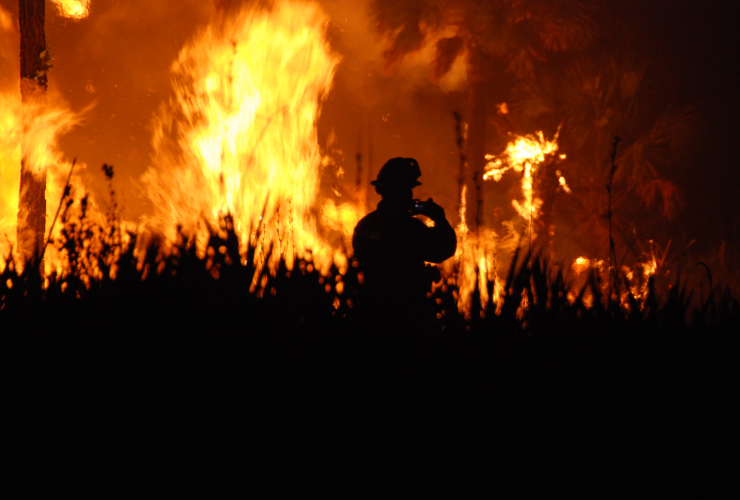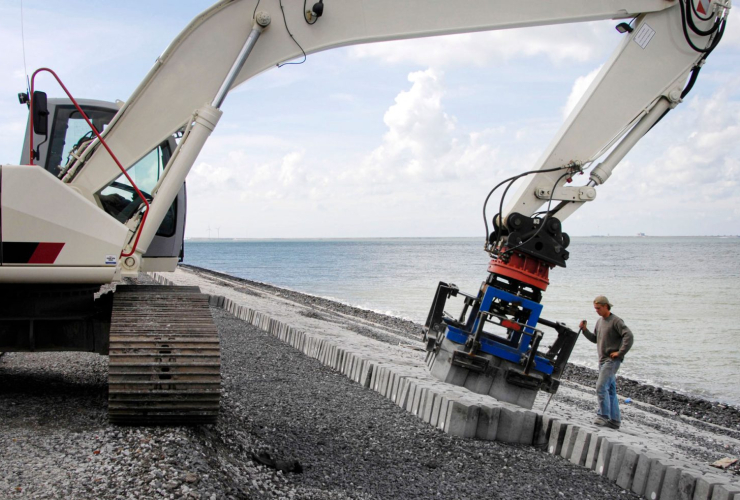Support journalism that lights the way through the climate crisis
As Canada gets closer to implementing a national flood insurance program, the federal government has an opportunity to send the right signals about preparing for the effects of climate change, says one adaptation researcher.
While the program is greatly needed to help people recover from the impact of floods, it should include long-term solutions that eventually phase out the need for high-risk insurance, said Ryan Ness of the Canadian Climate Institute. Those efforts should include building flood-resilient infrastructure when possible and supporting moving people out of especially high-risk areas for flooding when necessary.
The federal government announced Canada's National Flood Insurance Program in Budget 2021, allocating $31.7 million over three years for the creation of a low-cost flood insurance program to be developed by Public Safety Canada, Finance Canada and the Canada Mortgage and Housing Corporation.
In a statement to Canada’s National Observer, Public Safety Canada said the program will be made up of two parts: “A reinsurance product offered by a federal Crown corporation to support flood insurance availability, which will leverage public and private sector resources and expertise; and a separate affordability subsidy program to be cost-shared with provinces and territories.”
When details of the program are released, Ness said it should include caveats such as not insuring new builds in high-risk flood areas, and eventually phase out the need for flood insurance. In turn, that could put pressure on provinces to implement policies on not building in areas that are especially vulnerable to flooding.
Flood recovery is expensive and areas known to be flood-prone are sometimes not offered flood insurance or must pay extremely high premiums. In some instances, such as in Atlantic Canada following tropical storm Fiona, people find their insurance plans don’t cover floods from storms, especially floods from storm surges during hurricanes or other weather events.
A national insurance plan would mean those in high-risk areas would be able to access affordable insurance, even for storm surges.
In the United Kingdom, which has a national flood insurance program, buildings in high-risk flood zones created after the rollout of the program are not eligible for coverage. Canada must do likewise, Ness said.
“Otherwise, this flood insurance program will just be something that actually encourages maintaining the status quo for people who own these homes [and] for local governments,” he said.
“If it's just publicly subsidized flood insurance forever, it’s not going to drive the right type of decisions we need to make about adapting to climate change and reducing flood risk.”
Those decisions should also include relocating the highest-risk communities and homes, known as managed retreat, said Ness. It also means investing funds in flood-resilient infrastructure, which fits into Canada’s climate adaptation plan.
“You can also look at it a little bit more indirectly: like the federal government should not be providing infrastructure funding to support development or redevelopment in high-risk areas,” he added.
Canada’s costliest hazard
As of now, flooding is Canada’s costliest hazard, with average residential costs of $2.9 billion per year, according to a report by Canada's Task Force on Flood Insurance and Relocation published in 2022. Extreme flooding has touched many areas of the country: from Alberta’s 2013 floods in Calgary and southern Alberta that resulted in $6 billion in damages and five deaths to last year’s flooding in the Northwest Territories, where Hay River and nearby Kátł’odeeche First Nation experienced their worst flooding on record.
When flooding happens and homes are impacted, individuals and the government are left with the bills. According to the federal government, property owners assume approximately 75 per cent of uninsured losses each year, stemming from the $1.5 billion in damage to households, property, and infrastructure annually from floods.
Government disaster financial aid programs also step in, but the amount they give varies and the money can be slow to trickle in. In Nova Scotia, where deadly flash flooding in late July caused widespread property damage, up to $200,000 in uninsurable losses per household, small business and not-for-profit organization is being offered through the province. However, that money will take several months to come through.
While Public Safety Canada said there is no confirmed date for the program’s launch, Craig Stewart, vice-president of climate change and federal issues for the Insurance Bureau of Canada, told Saltwire Media it will be in place by 2025.
Ness also said attention should be paid to how the program serves renters.
“Lots of people who rent are living in risky areas. From an equity perspective … often areas of flood risk are actually areas where property values are lowest and … where cost of ownership or cost of renting are lowest,” he said.
“So if the program doesn't serve renters in those areas … that means it would not be serving an already marginalized group of low-income people; people who are often racialized as well.”






Comments